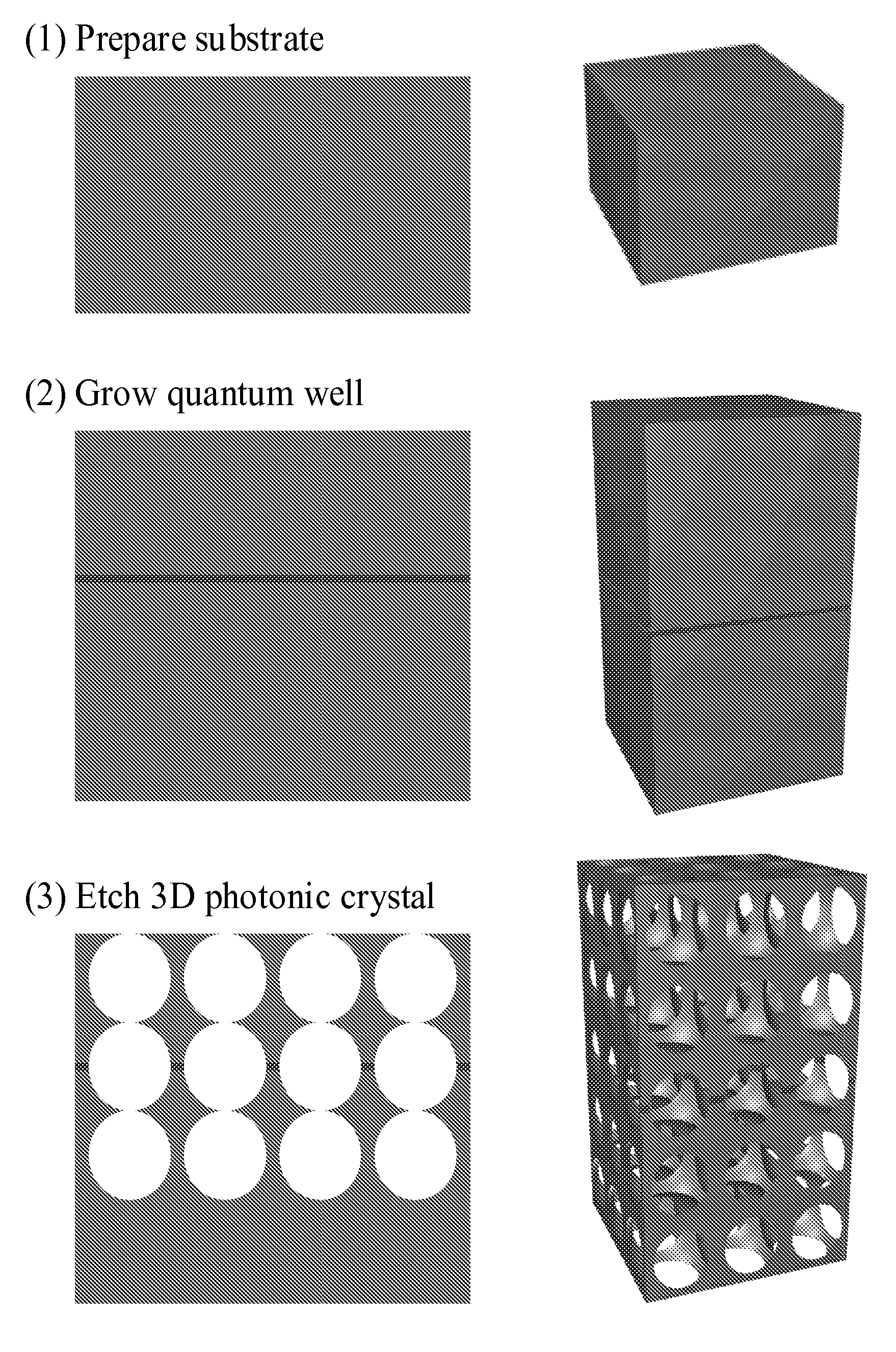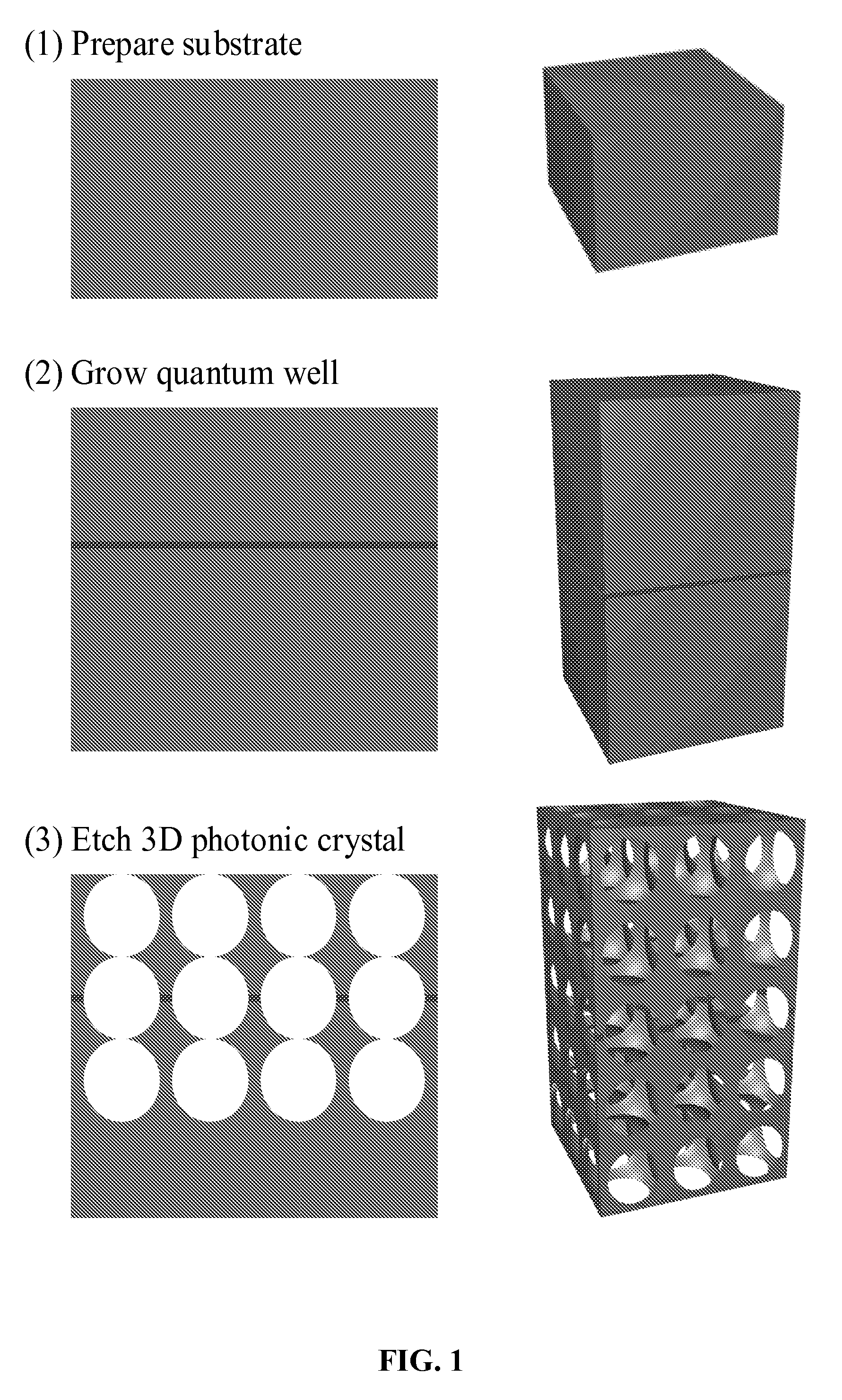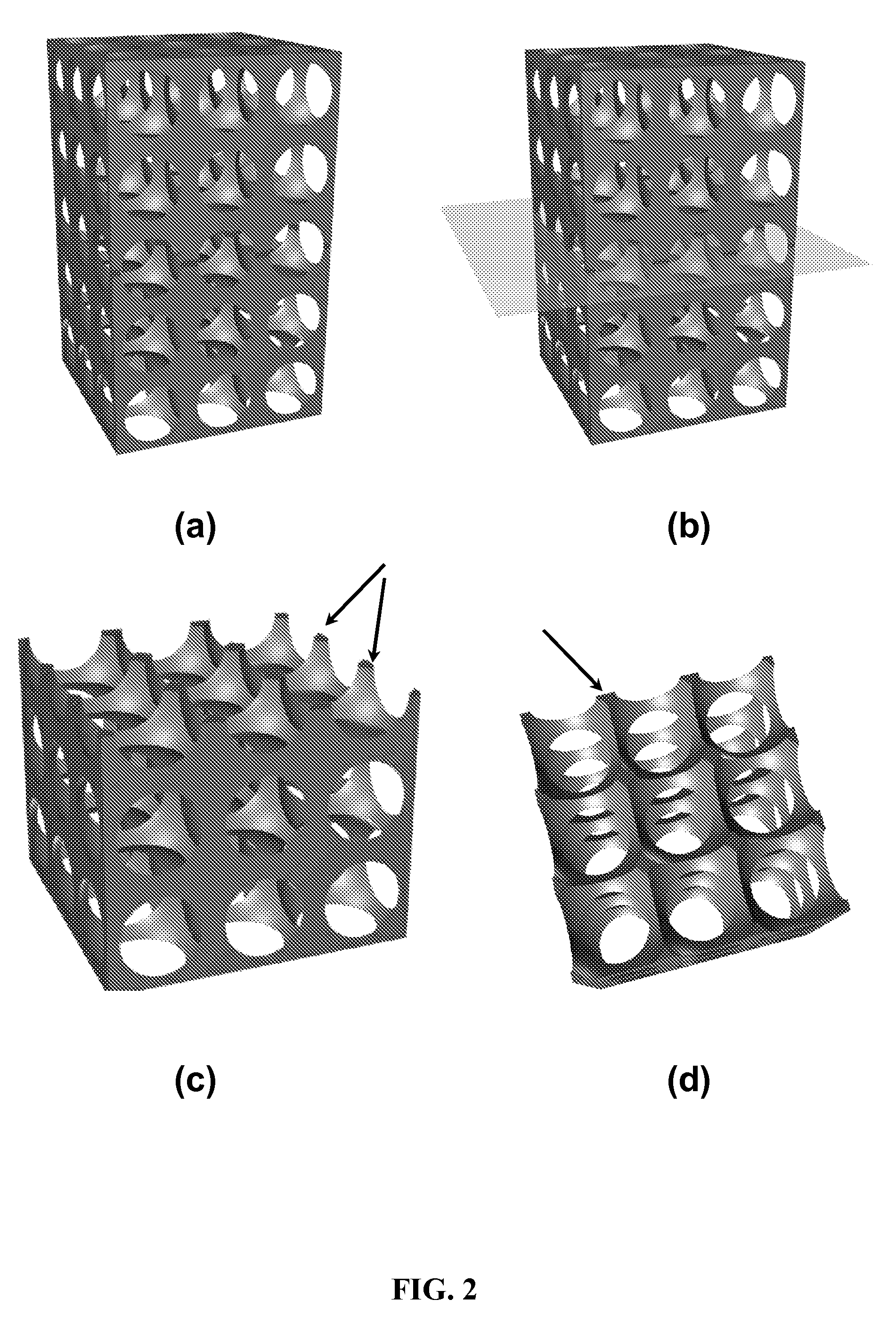Fabrication of quantum dots embedded in three-dimensional photonic crystal lattice
- Summary
- Abstract
- Description
- Claims
- Application Information
AI Technical Summary
Benefits of technology
Problems solved by technology
Method used
Image
Examples
Embodiment Construction
[0021] This disclosure provides a fabrication method that allows deterministic and easy placement of QD-s inside a 3-D photonic crystal lattice to be achieved, and which provides a path for electrical pumping of QD-s. Further, leak current bypassing QD-s is suppressed, and metal electrodes are optically isolated from, but electrically connected with QD-s. In addition, QD-s are passivated as part of the fabrication process, thus improving the stability of the devices. Homogeneous QD size and high density of isolated QD-s are possible.
[0022] The method and structure of this disclosure overcome the difficulties of conventional approaches. Photonic crystal structures provide natural pathways for current, thereby allowing convenient electrical pumping. The conductivity can be selectively enhanced by doping during crystal growth, e.g., during epitaxial growth. All pumping current necessarily passes through quantum dots, resulting in efficient pumping. The pumping electrodes are optically...
PUM
 Login to View More
Login to View More Abstract
Description
Claims
Application Information
 Login to View More
Login to View More - R&D
- Intellectual Property
- Life Sciences
- Materials
- Tech Scout
- Unparalleled Data Quality
- Higher Quality Content
- 60% Fewer Hallucinations
Browse by: Latest US Patents, China's latest patents, Technical Efficacy Thesaurus, Application Domain, Technology Topic, Popular Technical Reports.
© 2025 PatSnap. All rights reserved.Legal|Privacy policy|Modern Slavery Act Transparency Statement|Sitemap|About US| Contact US: help@patsnap.com



